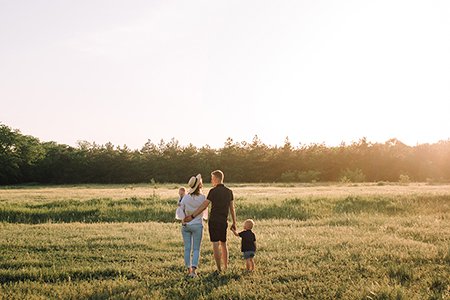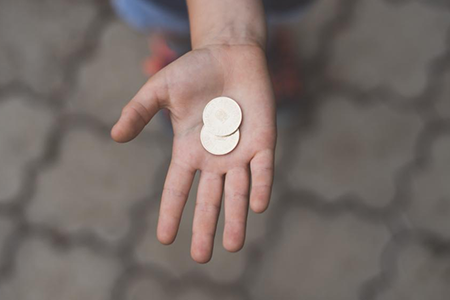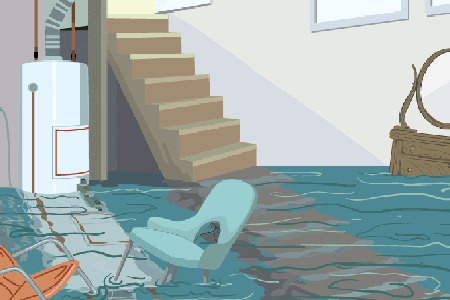KiwiSaver first home withdrawal
By MAS Team | 14 July 2022
The biggest challenge that most first home buyers face is coming up with enough money for a deposit. In an environment where interest rates are rising and the Government has introduced tighter lending rules, it can be harder for home buyers to gain mortgage pre-approval.
The availability of the MAS KiwiSaver Scheme savings to be used as part or all of a deposit, or towards settlement on the purchase of a home, can be a great benefit of KiwiSaver.

However, there are some 'technical' pitfalls that Members need to be aware of in applying for a first home withdrawal – we talk to our senior lawyer Elizabeth Johnston (pictured), about some key aspects of first home withdrawals to be aware of.
Thank you for your time today. Firstly, what do you think is the most important thing about a KiwiSaver first home withdrawal that Members need to be aware of?
I think one of the most important aspects of a first home withdrawal is to understand that the term 'home' is broader than just a house for these purposes – it also includes land, and land and build packages. I will use the term 'property' here to help explain that a first home withdrawal applies to house and the land, or the land by itself.
Navigating the many eligibility criteria for a KiwiSaver first home withdrawal can be daunting for Members. How do you suggest they approach the process?
The overall withdrawal process can be thought of like a decision tree. Firstly, it's worth considering some general criteria that applies to all Members. You have to have been a member of KiwiSaver for at least three years and the property must be in New Zealand and must be intended to be your principal place of residence. It's also worth noting that you will not be able to use any funds transferred to your KiwiSaver account from an Australasian superannuation scheme, and the legislation requires that $1,000 is left in your KiwiSaver account after withdrawal.
The second question you should ask yourself is have you made a first home withdrawal before where your purchase settled and your name was on the title to the land as an owner? If so, then you won't qualify to withdraw any further funds from your KiwiSaver account for this purpose.
If the answer to the second question is no, then the next question is, have you owned a property before? If the answer is also no, then if you meet the rest of the eligibility criteria (see above), you're good to go. If the answer is yes, you can apply to Kāinga Ora for an exemption from this particular eligibility criteria. This is sometimes referred to as a 'second-chance' withdrawal. If Kāinga Ora determines that you are in the same financial position as a first home buyer and you meet the remaining eligibility questions (see above), then you can move ahead with your application.
It's also worth mentioning that any first home withdrawal is not confirmed until your KiwiSaver provider has reviewed your application and agreed to release your funds. I say this, as MAS see some Members assuming that the funds are available immediately – but MAS may require additional documents to meet the requirements of the KiwiSaver Rules. Once your application is approved, the KiwiSaver scheme's administrator will take some time to redeem your units and arrange payment to your solicitor's trust account. So it's important to plan ahead.
Can you explain a bit more about how the 'second-chance' withdrawal rules work – this sounds a bit complicated?
You may be able to access your KiwiSaver funds for a first home withdrawal even if you have owned a property before. You will need to make an application to Kāinga Ora and provide evidence directly to them.
Kāinga Ora will assess your financial position to determine if you are in the same position as a first home buyer and therefore eligible for an exemption to the KiwiSaver first home withdrawal criteria that you have not previously owned property. It is really important to understand that if Kāinga Ora confirms you are eligible for a 'second-chance' withdrawal, you still need to meet all the other first home withdrawal criteria. The Kāinga Ora determination only ticks off one of the boxes you need to satisfy to be eligible for a withdrawal. It's not a guarantee that you will be eligible to make a withdrawal from your KiwiSaver account. To be very clear, the 'second-chance' refers to having owned property before, not having made a KiwiSaver first home withdrawal before.
You mentioned that a KiwiSaver first-home withdrawal also applies to land, and land and build packages? When should a Member be applying for a first home withdrawal in these situations?
This is quite topical at the moment. As the current housing market has become increasingly difficult to break into for first home buyers, a lot of first home buyers are now looking to purchase land and build packages, generally from development companies. These can have the advantage of allowing a buyer entry into the housing market with a potentially lower deposit required. Note that these types of purchases may potentially involve two separate contracts – the purchase agreement for the land and the build contract which is with the builder, or one contract where settlement doesn't take place until the build is finished and code compliance certificate is issued.
It's important to be aware that if you are purchasing land to build a home on which you intend to live in, you can only make one KiwiSaver first-home withdrawal. You cannot for instance, make a withdrawal to pay a deposit on just the land and then come back a second time to complete the transaction to fund building a house.
It's also important to know that any KiwiSaver first home withdrawal can only be used for the purchase of land – it can't be 'saved' or 'used' down the line towards the build contract if the agreement for the purchase of the land has settled and you are now the owner of the land.
We have had some Members ask about their eligibility for a first home withdrawal if the home is held in a trust, how does that work?
Yes, you can, in your capacity as a trustee of a trust still be eligible for a KiwiSaver first home withdrawal, providing the trust is purchasing a property that is your first home, and you are both a trustee and beneficiary of the trust and you intend to live in the property as your principal place of residence. To be eligible, your name (as the KiwiSaver member applying for a first home withdrawal) must be on the sale and purchase agreement, or on a deed of nomination.
This can be a complicated area and MAS always recommend that you seek professional advice from your solicitor and accountant as to the right structure for your purchase.
If I’m thinking of buying my first home, how do I go about applying for a first home withdrawal?
It’s always worth a reminder that if you plan to make a KiwiSaver first home withdrawal to go towards part of your deposit or at time of settlement that you should aim to have everything organised well ahead of time. Make sure you have spoken to your KiwiSaver provider and your solicitor and have a plan about when you’re going to use your KiwiSaver first home withdrawal. Most providers can provide an estimate of how much you can withdraw, well ahead of time. You will also need to complete an application withdrawal form and send that in with your supporting documentation. Your solicitor should be able to assist with getting the timing requirements right.
MAS requires your application form to be sent to us at least 10 business days before your withdrawal date, to give us time to review your application and arrange the payment.
If you’re wanting more information on KiwiSaver first home withdrawals, you can visit our dedicated website here. You can also call us on 0800 627 738 or send us an email to help with an estimate of what you may be able to withdraw or if you have any questions.
Also, if you’re planning on withdrawing funds in the near future, it’s worth considering what type of fund you should be in. For example, if you plan to withdraw your funds in less than one year, you could think about investing in a more defensive investment option such as a cash fund. A defensive type of fund will invest mainly in income assets such as cash and bonds and is suited to Members looking for a low-level risk. This may help protect your investment from short-term market movements.
Medical Funds Management Limited is the manager and issuer of the MAS KiwiSaver Scheme. The PDS is available here.
This is general information only and not intended to constitute financial or legal advice.

23 May 2022
Life insurance can support your family and dependents if you die or are diagnosed with a terminal illness, but you might be worried about the cost. The good news is your level of life insurance cover can be adjusted to meet what you can afford to pay.

9 September 2019
Like many of us, you probably take your ability to work and earn a living for granted. But if you were suddenly unable to work for a prolonged period, how easily could you meet your regular financial commitments and maintain your lifestyle?

29 November 2018
These tips can help safeguard your holiday home from some of our most common claims caused by water damage, stormy weather or burglars.